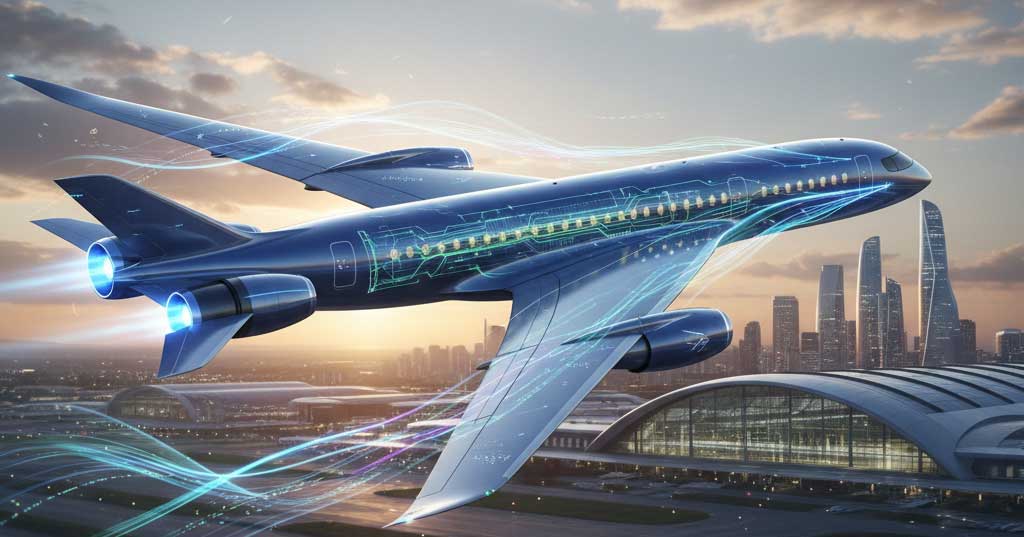
What Is Aerospace Engineering?
Aerospace Engineering is a dynamic and multidisciplinary field dedicated to the design, development, testing, and manufacturing of aircraft, spacecraft, and related systems. It is broadly divided into two main branches: aeronautical engineering, which focuses on vehicles operating within Earth’s atmosphere, and astronautical engineering, which deals with vehicles that operate beyond it. Aerospace engineers work at the forefront of innovation, applying principles from physics, mathematics, aerodynamics, and materials science to improve flight technologies. Their work contributes to significant advancements in commercial aviation, defense, and space exploration, aiming to enhance safety, efficiency, and performance in air and space travel.
Table of Contents
ToggleCareer opportunities
Career Opportunities:
- Commercial Aviation: Designing and upgrading passenger and cargo aircraft.
- Defense Sector: Creating advanced military aircraft and surveillance systems.
- Space Agencies: Developing satellites, spacecraft, and planetary exploration tools.
- Private Aerospace Companies: Working on commercial space missions and R&D.
- Research Institutions: Conducting advanced studies in flight technology and systems.
- Academic Positions: Teaching and leading aerospace research in universities.
- Consultancy: Advising on aerospace designs, projects, and safety standards.
- Government Agencies: Formulating regulations and overseeing compliance in aviation.
Challenges and Rewards
Challenges and Rewards:
- Complex Problem-Solving: Addressing intricate design and engineering issues.
- High-Pressure Environments: Meeting deadlines in critical projects.
- Safety Regulations: Strict adherence to global safety and quality standards.
- Technical Challenges: Overcoming difficult engineering and performance barriers.
- Innovative Contributions: Leading development in aerospace technologies.
- Space Missions: Participating in interplanetary exploration and satellite design.
- Technological Feats: Achieving new milestones in aviation and rocketry.
- Professional Fulfillment: Making meaningful contributions to global progress.
Impact on Society
Impact on Society:
- Safer Air Travel: Implementation of advanced safety features in aircraft.
- Efficient Transportation: Reduced fuel consumption and travel times.
- Space Exploration: Expanding human knowledge of space and Earth’s surroundings.
- Communication Systems: Enabling satellite-based telecom networks.
- Weather Forecasting: Enhanced accuracy through satellite observation.
- GPS and Navigation: Improving location-based services and transportation.
- Tech Innovation: Spurring new inventions across multiple industries.
- Economic Contribution: Generating employment and industrial growth.
Future of Aerospace Engineering
Future of Aerospace Engineering:
- Electric Aircraft: Promoting environmentally friendly air travel.
- Hybrid Propulsion: Blending conventional and alternative energy sources.
- Space Exploration: Expanding missions to the Moon, Mars, and beyond.
- Autonomous Systems: Integrating AI into aircraft and drone operations.
- Advanced Materials: Using composites and smart materials for lighter, stronger builds.
- Green Technologies: Minimizing carbon footprint and pollution.
- Reusable Rockets: Making space missions more cost-effective.
- Commercial Space Travel: Enabling private access to outer space.
Hands-On Experience
Hands-On Experience:
- Internships: Real-world exposure through placements in aerospace industries.
- Laboratory Training: Developing hands-on skills with experimental tools and systems.
- Project Work: Applying theory in collaborative design and innovation projects.
- Simulations: Using virtual environments to model flight dynamics and performance.
- Technical Tools: Operating specialized engineering software and machinery.
- Team Projects: Learning collaboration through group engineering tasks.
- Field Experience: Site visits and practical sessions in operational settings.
- Workshops & Seminars: Gaining insights from professionals and cutting-edge research.
Blog & Article
Elevate Your Knowledge, Illuminate Your Future
Connect us for more information about Aerospace Engineering

